Tea is made in hundreds of different ways in India alone.
There's the yak butter tea you will find in the Himalayas. And the Kashmiri kahwa whose votaries swear by it.
Much of the Hindi heartland drinks milky, sweet chai, spiced up with adrak and elaichi.
Bengal prides itself on its special concoctions of tea that differ home to home.

Photograph: Sanna Irshad Mattoo/Reuters
International Tea Day was recently celebrated on May 21 as per the United Nations calendar -- although other parts of the world celebrate it on December 15 -- and it's a good time as any to collect a few facts about chai and try a few recipes.
The UN marks this day for the simple reason of bringing awareness for the industry, and the culture and history of the drink, so that eventually that leads to both sustainable cultivation and manufacture of tea that will benefit tea workers both in factories and gardens, via fair trade practices, price subsidies and more.
The tea-growing fraternity are mainly the nations of India, China, Sri Lanka, Nepal, Japan, Iran, Thailand, Myanmar, Vietnam, Indonesia, Bangladesh, Turkey in Asia and in Africa, Kenya, Malawi, Malaysia, Uganda and Tanzania. Argentina is also a major tea grower.
While India and China are the largest tea-producing nations, Turkey is by far and away the biggest consumer of chai, called rize çayı in Turkish, with 3.12 kg tea drunk per head in 2022, followed by Ireland next and then the UK and in fourth place Pakistan.
Morocco, Iran, New Zealand, Chile were also in the top 10. China was at 21 and India not in the list of the top 55 chai-drinking nations according to the latest figures from Statista.
After water, chai is the most popular drink in the world. Coffee apparently comes third and then orange juice and beer, according to one survey.

Photograph: Tim P Whitby/Pool via Reuters
Even if India is not one of the largest consumers of tea, it is our national drink and we probably have the most tea shops in the world, with one at every chowk/corner in every city, town, village. They hawk the most varied cups of tea through homegrown creative marketing. More important is the gyan and facts of life you can pick up at chai stall.
A recent WhatsApp forward: 'On my morning ride today, I saw a tea vendor with the sign: 'Chai GPT. Backed by AI. Apparently, it was Great Pot of Tea. Backed by Adrak and Ilaichi'.

Photograph: Ali Khara/Reuters
Have you sampled the types of tea that sell at our chai dukaans or is served in our homes? Like pudina chai in Rajasthan. Tulsi tea in Bihar, Jharkhand and Madhya Pradesh. Kesar chai in Hyderabad. Irani chai in Mumbai. Lal cha in Sikkim and the North East.

Photograph: Clodagh Kilcoyne/Reuters
Go ahead and try making Durga Shakti Nagpal's recipe for Masala Tea. Or Bethica Das' Masala Ginger Lime Tea.

Photograph: Eloisa Lopez/Reuters
Attempt Ruby Rose Tea, a recipe courtesy the Taj Mahal group of hotels, which is a delicate mix of Oolong tea leaves and dried rose petals.
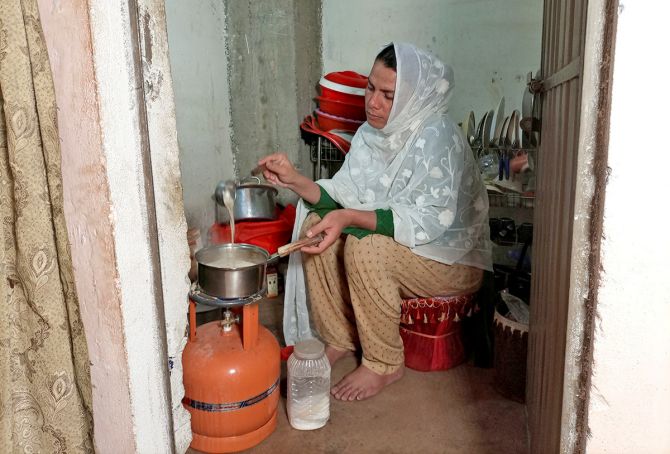
Photograph: Salahuddin/Reuters
Tea sommelier Radhika Batra Shah offers a preparation of Darjeeling Black Rose Petal Tea.
Raw mango is the freaky addition to the ingredients of Mango and Green Tea Infusion by Anamika Singh of Anandini Himalaya Tea.
Masala Tea Martinis, by Novotel Chef Avinash Kumar, are a Great Indian Ending to a day.

Photograph: Saba Kareem/Reuters
Here's a recipe for one of India's finest chais:
Kashmiri Kahwa
Serves: 4
Ingredients
- A few strands kesar or saffron + extra for garnish
- 3-4 lavang or cloves
- 2 pieces green elaichi or cardamom
- Honey to taste, about 3 tsp
- 1-inch piece dalcheeni or cinnamon
- 4 tsp green tea
- Generous pinch dried rose petals
- 7-8 almonds, thinly slivered or 3-4 walnuts, chopped
- 5 cups water
Method
- In a mortar and pestle roughly crush together the spices, except the kesar.
- In a saucepan bring the water to a boil with the crushed spices and the kesar over medium heat.
Then add the tea leaves.
Let it brew for a minute or two.
Strain.
Add honey and mix. - Serve hot in small glasses garnished with saffron and nuts.
Photographs curated by Manisha Kotian/Rediff.com

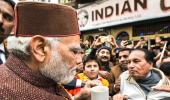
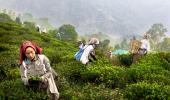






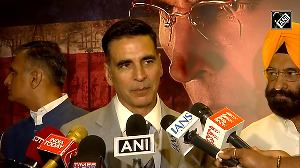
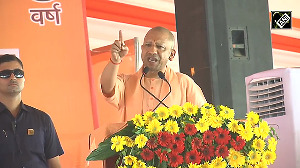
 © 2025
© 2025